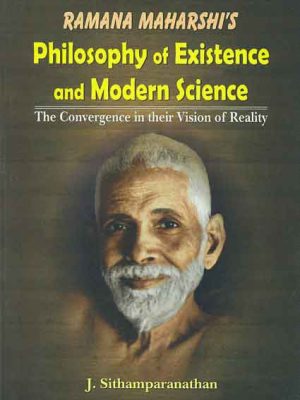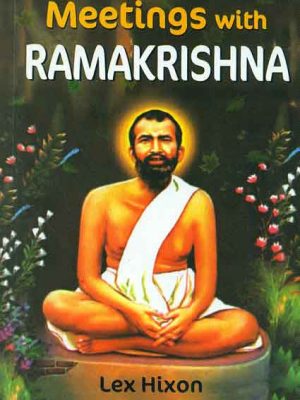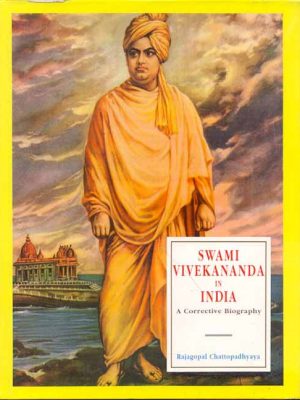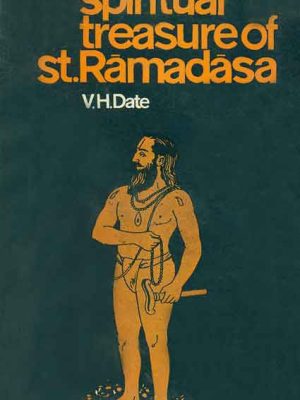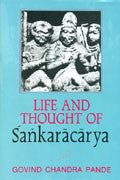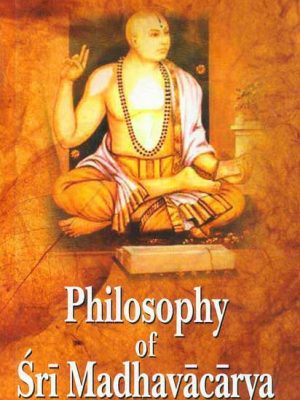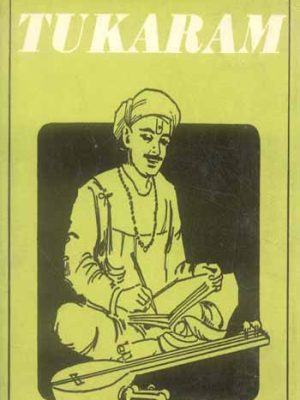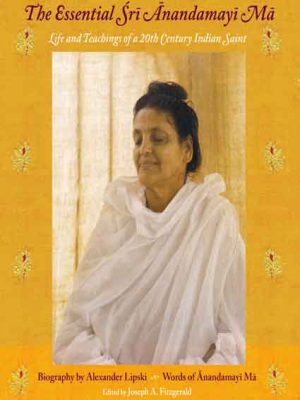
Here are some must read books about Hindu saint. Those Individuals who come to know the divine reality and their own true nature in relation to that reality and who are able to lead others into that same realization and relationship are called saints. Some Hindu saints are considered incarnations of divine, providing direct access to that reality. other saints model the idea human response to the divine, a response characterized by meditation, union or loving devotion. By studying about the life of such great Hindu saints helps us to lead a better and meaningful life and we can lead our life in the path of attaining karma.
Ramana Maharshi’s philosophy of existence and modern science

Ramana Maharshi’s Philosophy of Existence and Modern Science: The Convergence in their Vision of Reality is authored by J. Sitharamparanathan, a firm devotee of Bhagavan Ramana Maharshi. Ramana Maharshi was an Indian Hindu guru who taught Advaita Vedanta- often called ” Non- duality” in English. According to Bhagavan Ramana, our attention is always going outward, toward objects, and we must only turn inward, toward the self. The in-depth treatment of the convergence between the vision of reality emerging from modern scientific research and the vision of reality revealed by the mystics and sages from ancient times will convince all rational readers that there is now no conflict between the science ad the true spirituality. The book has special significance in the modern world where the secular and the spiritual need to be balanced, both at the personal as well as the national level, if peace, fulfillment and harmony are to prevail.
Meetings with Ramakrishna
Meetings with Ramakrishna is authored by lex hixon. The greatest gift of Sri Ramakrsihna is that he has brought out the essence of the lofty philosophical treatises in a language that everybody can understand. Consider this: “Divine Reality is a limitless ocean of Consciousness and individual awareness is a jar. This vessel does not simply bear a finite amount of awareness but is totally immersed in the ocean of Consciousness and Bliss. There is water both inside and surrounding the jar. Yet until the jar is broken or dissolves, there remains a slight sense of distinction between inside and outside. Divine Mother keeps this jar of ego together for her Play, her theatre.”
Nuggets of wisdom like this are strewn across the book.
Swami Vivekananda in India: A corrective biography
Swami Vivekananda In India: A Corrective Biography is authored by Rajagopal Chattopadhyaya. Swami Vivekananda in india: A Corrective Biography attempts to inform the reader accurately about his life both before and after his historic visits to the West. Much material has been translated anew from original Bengali books. At the same time it challenges current popular and pious notions held about this humanitarian-monk. The four major chapters in this book are about his meetings with Sri Ramakrishna, his travels in India during 1886-1893, media waves about him in India, and his triumphant return from the West in 1897. Analysis of original eyewitness reports in both India and Western newspapers and periodicals forms an integral part of this biography.
Spiritual treasure of saint Ramadasa
Spiritual Treasure of St. Ramadasa is authored by V.H.date. Samartha Ramadasa, one of the foremost Indian saints, was a great philosophico-spiritual thinker who in his times attracted even political power on his side and helped to establish a secular government in Maharashtra under the care of Sivaji, the glorious Hindu ruler in the Mughal period. The present treatise is virtually the study of his thought as enshrined in his Dasabodha and other works. The book is divided into five chapters. Chapter I deals with the life of Ramadasa, his Sadhana, his rules of conduct and his relations with Sivaji. Chapters II and III furnish an analytical survey of Dasabodha-a unique spiritual work of Ramadasa. Chapter IV discovers the unfading pearls that lie in the heart of Dasabodha. Chapter IV discovers the unfading pearls that lie in the heart of Dasabodha. Chapter V combines selections from other works of Ramadasa and deals with the Personal and Impersonal aspects of God, Nature of Brahman, reality and unreality of names and forms, liberation as a process and not an event and kindred philosophical issues.
-
 Spiritual Treasure of St. Ramadasa₹1,000.00
Spiritual Treasure of St. Ramadasa₹1,000.00
Life and thought of Sankaracarya
Life and Thought of Sankaracarya is authored by Govind chandra pandey. The ideas of Sankara have been generally interpreted in the light of later Advaitic and monastic tradition. The present work, following the lead of recent critical scholarship, seeks to discover the original ideas of Sankara on the basis of his genuine works and discusses them in the light of his relationship to his predecessors, the social and cultural ethos of his times and his own mission, presuppositions and methodology. Despite the existence of several legendary biographies of Sankara from medieval times, no critical historical biography of the Master has been available so far. The present work attempts to fill the lacuna. It is based on a critical study of all the available sources in the original and attempts a historical reconstruction of Sankara’s life and work.The ideas of Sankara have been generally interpreted in the light of later Advaitic and Monastic traditions. The present work, following the lead of recent critical scholarship, seeks to discover the original ideas of Sankara on the basis of his genuine works and discusses them in the light of his relationship to his predecessors, the social and cultural ethos of his time and his own mission, presuppositions and methodology. The present work, thus, seeks to understand the ideas and achievements of Sankara in the context of perennial spiritual seeking and philosophical enquiry. It seeks to bring out the role of Sankara in the evolution of Indian culture and philosophy and to highlight the logical and spiritual, traditional and original components of his philosophical, religious and social ideas.
-
 Life and Thought of Sankaracarya₹995.00
Life and Thought of Sankaracarya₹995.00
Philosophy of sri Madhavacarya
Philosophy of Sri Madhavacarya is authored by B.N.K Sharma. The volume is a good presentation of the philosophy of Sri Madhvacarya, complete in its architectonic unity. The author probes its ontological and epistemological foundations, and critcally examines the structure erected on them. The discussion focuses on crucial doctrines of theism, and brings to light for the first time the striking parallelisms of thought between Madhva and his Western contemporary St. Thomas Aquinas. Light is also thrown on how Madhva and his commentators anticipated the views of modern philosophers like Spencer, Russell and Hobhouse on the nature of time, space and memory. The latest researches on Madhvacarya’s role in the Vedantic Bhakti movement and his attempt to harmonize the Upanisadic texts on monism and dualism are substantially drawn upon.
-
 Philosophy of Sri Madhavacarya₹1,100.00
Philosophy of Sri Madhavacarya₹1,100.00
Life of Tukaram
Life of Tukaram is authored by Justin E. Abbot. This book treats two representative Hindu rituals of contemporary India, Puja (offering service) and Samskara (initiation rituals at important occasions of life). Samskara rites are performed at significant junctures of an individual`s life, from birth to death, by the individual`s family. Puja rites, rather than being performed in relation to the life cycle of an individual in a family, are more deeply related to the annual rituals of the cult to which an individual or the person`s family belongs. Persons may go to a temple and request priests to perform puja rites, or they may perform them themselves at home. For people living in India, Puja and Samskara are not at all uncommon. Puja rites are performed everywhere-at temples, in private homes, on street corners-and although in recent times families observing all the traditional Samskara rites have declined in number, almost all Hindu families still perform the major Samskaras. it is difficult, however, for those living outside India to know how these rites are performed. Hence, this book presents a large number of photographs that enable readers to gain an accurate grasp of them and indicates the place of ritual in the total structure of religion.
-
 Life of Tukaram₹745.00
Life of Tukaram₹745.00
The Essential Sri Anandmayi Ma: Life and teachings of a 20th century Indian saint
The Essential Sri Anandamayi Ma: Life and teachings of a 20th Century Indian Saint is authored by Josepha A. Fitzgerald, Alexander Lipski, Anandmayi ma. It provides us with an insightful interpretation of the significance of Anandamayi Ma’s personality and teaching. An edited rendering of Preofessor Lipski’s writings on Anandamayi Ma begins the present volume, forming the first and second chapters. No work on Anandamayi Ma would, however, be complete without the inclusion of her actual words. To that end, the third and largest chapter of the present volume provides edited selections from Ma’s discourses, recorded by Brahmachari Kamal Bhattacharjee and later translated into english by Atmananda, both close devotees. This biography by professor Lipski along with the actual words of Anandamayi Ma creates as complete a verbal representation as is possible of a woman who was herself beyond the level of duality and thus, ultimately, beyond all description. This Illustrated edition features: 125 color and sepia photos and illustrations a concise and sensitive biography written by an American scholar and admirer edited selections from Anandamayi Ma’s teachings previously unpublished outside India.





